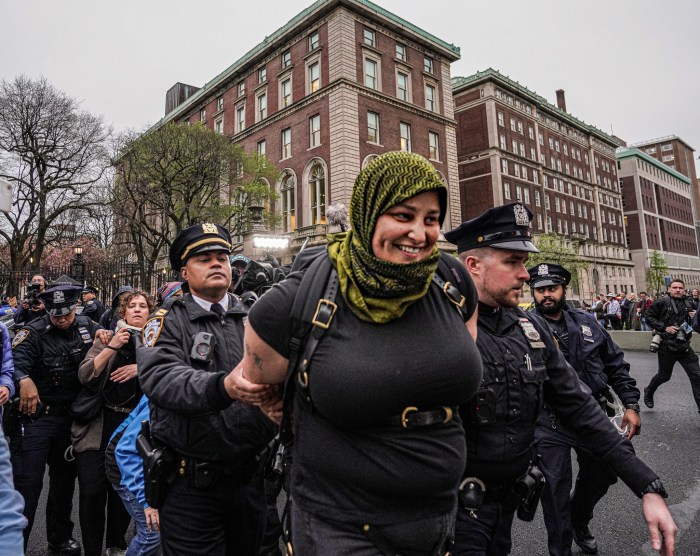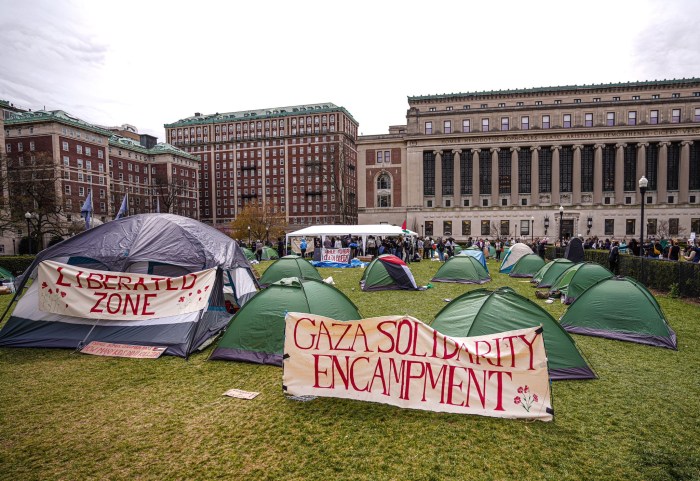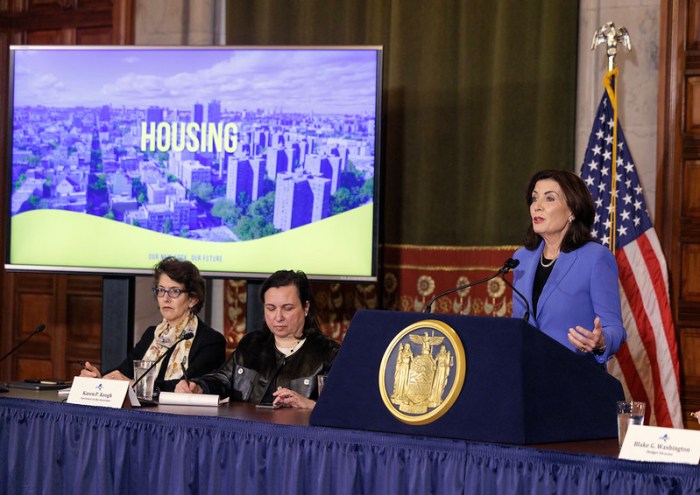Time’s Up may be just the right time for the Equal Rights Amendment.
U.S. Rep. Carolyn Maloney, actress and activist Alyssa Milano and others gathered at the Fearless Girl statue on Monday morning to renew the push for ratification of the ERA across the country.
“I think this is a moment in time you can seize on,” said Maloney, who has sponsored the ERA in the House of Representatives 11 times to date. “We’ve got the wind at our back with the #MeToo movement and the Time’s Up movement . . . There’s a new awareness.”
Milano, who has spoken out about discrimination and abuse of women in the entertainment industry and beyond, said getting the ERA ratified is crucial. She said women’s rights are in danger of being rolled back by the administration of President Trump.

“The Equal Rights Amendment — if not now, then when?” asked Milano. “Women are together and we have formed a bond that’s unstoppable.”
Unable to secure a legislative hearing on the bill, Maloney is planning a “shadow” hearing for the bill on Capitol Hill this coming Wednesday. Milano plans on attending and testifying.
“When you are not protected by the Constitution, you are considered less than, and it breeds a societal view point that women can be taken advantage of,” said Milano. “The fact that women are not protected under the Constitution is the most absurd thing I have ever heard.”
The ERA’s roots stretch back to suffragist Alice Paul, who helped women win the right to vote in 1920. Three years later she started working on a constitutional amendment that would make it clear men and women deserve equal rights in the United States. That document was later renamed the Equal Rights Amendment.
Prompted by the women’s rights movements of the 1960s and 1970s, the ERA was approved by Congress in 1972 and New York was one of the states that ratified it that same year.
But by the 1982 deadline, only 35 states had ratified the ERA — three short of the number needed for a constitutional amendment.
For the first time in decades, a new state ratified the ERA when Nevada took action in 2017. Illinois joined the list last week.
ERA supporters are hoping to make it an issue in the upcoming Congressional elections.
“If your legislator is not supporting the ERA, not supporting women in the Constitution, he or she is not supporting women’s rights,” said Carol Robles-Roman, co-president and CEO of the ERA Coalition/Fund for Women’s Equality.
Christopher Malone, a political scientist and associate dean for the School of Natural and Social Sciences at Lehman College, said it’s unclear whether the popular momentum for the ERA extends to Congress and the statehouses where it needs to be approved.
“If there is a blue wave coming this fall, it very well may lead to a revival of this important amendment,” Malone said, referring to a possible successful election cycle for Democrats. “It could be a vehicle to get voter turnout, but then you still have to deal with a very hard political landscape.”
He also pointed out the conservative movement of the late 1970s and early 1980s — which included Conservative activist Phyllis Schlafly’s strong anti-ERA campaign — was a reaction to the earlier progressive era.
Whether Maloney’s bill gains traction in Congress or a 38th state signs on, the next steps are likely to be determined by the courts. Even advocates are unsure whether all states that previously supported the ERA will have to ratify it again. But they remain optimistic.
“We are riding this momentum,” said Robles-Roman. “The pendulum of equality is now swinging in our way big time.”

















